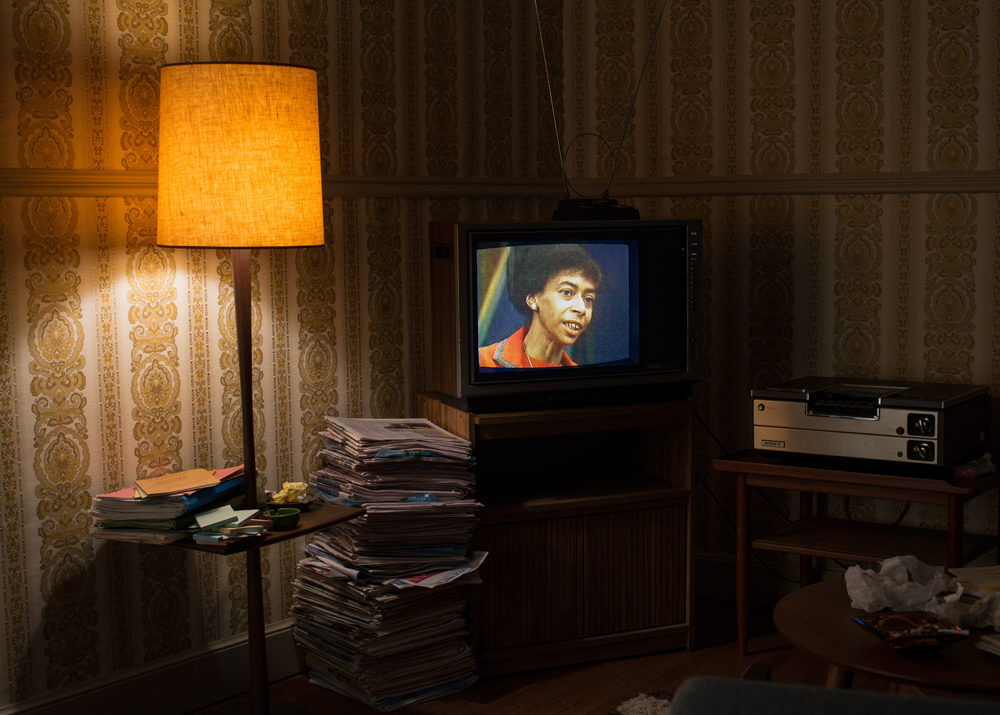Advertisement
'Recorder': Meet The Woman Who Recorded 70,000 Tapes Of American News
Resume
Over the course of three decades, one woman in Philadelphia taped CNN, Fox News, MSNBC, and other news programs for 24 hours a day, seven days a week.
Marion Stokes, a former communist activist who died in 2012, recorded over 70,000 Beta and VHS tapes that are now recognized as a treasure trove chronicling recent American history.
Stokes and her recordings, which have been acquired by the Internet Archive in Richmond, California, are the subject of director Matt Wolf’s new film called "Recorder: The Marion Stokes Project.”
Wolf first heard about the tapes from media coverage from when the collection was transported from Philadelphia to the Bay Area. He makes films about archival footage and thought Stokes’ collection was “unprecedented.”
“It felt like an archive that could include anything and everything,” he says. “And that challenge and that possibility really appealed to me.”
Leveraging his mutual contacts, Wolf connected with Stokes’ son, Michael Metelits. Wolf soon traveled to Philadelphia to meet Metelits and Frank Hileman, Stokes’ assistant and secretary.
As the trio started talking about Stokes and her recordings, Wolf began to understand the deeper significance of the collection.
“I quickly realized that this wasn't just a story about an unprecedented archive,” Wolf says. “It was also an emotionally intense family's story about a really unique and singular visionary.”
Stokes began recording around the birth of the 24-hour news cycle. She felt it was an important influence on public opinion and wanted to capture this lens through which people view current events, Metelits says.
Metelits, her son, says the recording began with Ted Koppel’s “Nightline” series about the Iranian hostage crisis.
“Her fascination with capturing the evolution of these stories grew watching the Iranian hostage crisis story shift and change and evolve over time,” he says. “Her taping expanded and expanded.”
In the film, assistant Hileman says the apartment Stokes shared with her husband was full of magazines, books and newspapers. He estimates she read 11 newspapers per day and never threw a single one out.
Advertisement
To make the film, Wolf developed a complex system to index and identify the 70,000 tapes, which were all six to eight hours long.
In the end, he only digitized 100 of the tapes and says those 700 hours are “a tiny scratch into the surface of what's there.”
At the time Stokes began recording, television stations had been deleting archives for decades, Wolf says.
The film includes moments in history that she captured like a scene that displays four different television screens playing morning shows on 9/11.
But the collection contains far more than news coverage of historical and forgotten events, Wolf says. The commercials, public service announcements, talk shows and sitcoms that Stokes captured serve as a historical record along with the news.
“That material truly doesn't exist anywhere. It tells us so much about who we were and how the world became what it is today,” he says. “That kind of information and insight into who we are, it doesn't exist except in a collection like this.”
Taping was a form of activism for Stokes, Metelits says. His mother stepped back from the communist activism she did during the 1960s because of a strong desire for personal privacy.
When she stopped organizing demonstrations, she still felt a sense of responsibility to “inform people's understanding of events,” he says.
“She would want to capture everything and she would want people to know about it,” he says. “But she was extremely secretive about her project and extremely secretive about the details of it.”
Metelits thinks his mother would have mixed feelings about Wolf’s film because of her internal conflict surrounding privacy.
No one knew she was doing this project — she would have the tapes discreetly delivered and removed from the apartment to hide them from guests, he says.
Toward the end of his mom’s life, Metelits encouraged her to open up to his children.
“She asked me specifically one night, ‘Well, who's going to be able to tell my story?’ ” he says. “So every time I chat with Matt [Wolf], I'm reminded of how fortunate I am that I found somebody who actually could tell that story in a really holistic way.”
With the “deluge of information that washes over us,” Wolf says many of the faces and catastrophes we see on the news are often forgotten.
By preserving the past with her tapes, Stokes illustrated patterns and details that give insight into what to expect from society, politics and the media.
“In this era of so-called fake news, Marion [Stokes]'s project has a kind of enhanced urgency because it's clearer and clearer that public opinion is being shaped by the predilections of those who produce the news,” Wolf says, “and furthermore, who produce history.”
History repeats itself, he says, so the collection is as much about the past as it is about the future.
“She was concerned about that and she did something about it,” Wolf says. “It also is an incredible model about doing something to protect the truth, which is under attack more than it ever has been before.”
Emiko Tamagawa produced and edited this interview for broadcast with Peter O'Dowd. Allison Hagan adapted it for the web.
This segment aired on November 14, 2019.

